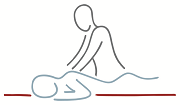It’s mid-winter and very cold, particularly when most people have to do their training (morning and evening), so how can you stay safe and still train well?
Here are a few tips and things to consider:
Anyone with Asthma, Exercise – induced Bronchitis or Raynaud’s syndrome should speak to their doctor before exercising outside during the winter as cold air can make these conditions worse.
Dress appropriately – full length leggings, warm socks, hat, gloves, wind/rain proof jacket. A number of thin layers are best so you can take some clothes off as you get warmer. Pockets or a small bum bag are useful to put discarded layers into.
Do your warm up inside – A good warm up is vital to reduce the risk of injuries and get your muscles ready to work. It will take longer to warm up properly outside.
If you have to exercise in the dark, keep to well lit areas and wear reflective clothing. Ideally exercise with a friend and avoid listening to music. You will be more vulnerable to accidents if you cannot hear what is going on around you.
Keep hydrated – you will still be sweating and need water to function properly however cold it is.
Be aware of the symptoms of hypothermia – Intense shivering, Slurred speech, Loss of coordination and Fatigue. If you have these symptoms you should seek medical help urgently.
Rain and Ice in freezing temperatures will make surfaces slippery and dangerous. Postpone your training to a safer day and do something inside instead – Swimming, gym and yoga are all valuable substitutes.

